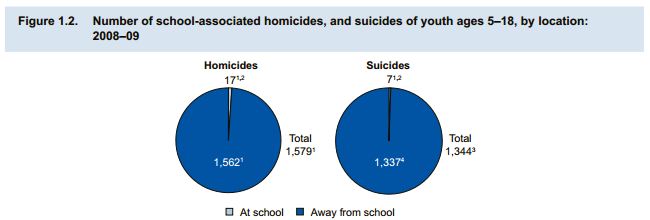
An opinion piece for The Washington Times suggested that “every schoolteacher in America should be armed in the classroom,” ignoring that schools -- where guns are typically not permitted -- are among the safest places for young people.
In an August 26 op-ed, Steve Siebold, a motivational book author, also suggested that the mass shooting at Sandy Hook Elementary School in Newtown, Connecticut, that left 20 children and six educators dead could have been prevented if teacher Victoria Soto, who was killed in the attack, had been armed with a gun:
If we look back at Sandy Hook last year, first-grade teacher and hero Victoria Soto, who was fatally shot after hiding her kids in a closet and telling the gunman the kids were in the gym, might still be alive had she been armed and able to defend herself. So could a lot of other children and teachers who tragically died that day.
In advocating for the arming of all teachers, and insisting that “If teachers aren't comfortable with that, they may need to find a new profession,” Siebold left out key facts about past mass school shootings. For example, he cites the 1999 Columbine High School mass shooting to buttress his claim that, “Arming our teachers and training them how to use a firearm properly will translate to fewer heinous acts taking place.” In fact, an armed guard twice exchanged fire with one of the two shooters but was unable to stop the shooting.
Siebold also cited the 1997 Pearl High School shooting in Mississippi, noting that, “An assistant principal who was armed intervened and held the shooter at gunpoint until police arrived.” Left out was the fact that the assistant principal, a member of the Army Reserve who was presumably well-versed in the use of firearms, retrieved a handgun from his car and detained the shooter in the parking lot apparently after the shooting was already over.
Even taking into account horrific mass shootings, primary and secondary schools are much safer environments for young people compared to the surrounding community. Since the Department of Justice Bureau of Justice Statistics began recording homicides at schools in the 1992-3 school year, the proportion of youth homicides that occurred at school has never exceeded 2 percent of total youth homicides. Suicide was also much more likely to occur away from school. In 2008-09, 17 homicides involving victims between the ages of 5 and 18 occurred at school compared to 1,562 away from school:
Siebold's assertion that arming teachers would make schools safer is not supported by research, which finds little evidence that armed guards -- who presumably would have more extensive firearms training than teachers -- improve safety, with one study finding that the presence of armed guards actually made students feel less safe.
While some, including the National Rifle Association, have proposed arming teachers to prevent school shootings, the National Education Association has said funding should go to school resource officers -- who are actual members of law enforcement -- and not to training school employees and volunteers to carry guns.
